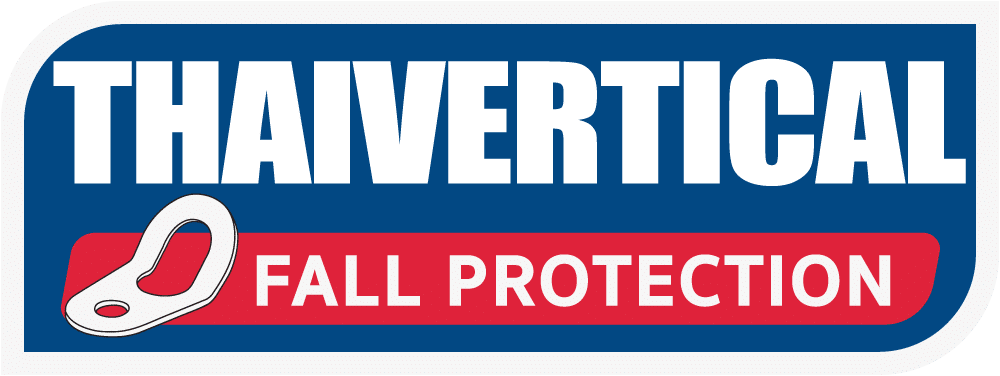EN 795:2012 Standard
(Personal Fall Protection Equipment – Anchor Devices)
EN 795:2012 is a European standard that defines the requirements for anchor devices used in conjunction with fall protection systems to ensure the safety of personnel working at height.
This standard classifies anchor devices into five types (Types A to E), each with distinct characteristics and applications as follows:
1. Type A – Fixed Anchor Devices
-
These are permanent anchors installed on solid structures such as walls, beams, or concrete floors.
-
Installation typically involves high-strength bolts or chemical anchors.
-
Users connect their fall protection equipment directly to these fixed points.
2. Type B – Temporary Anchor Devices
-
These are portable anchors that can be easily installed and removed.
-
Suitable for maintenance work or temporary tasks on rooftops or steel structures.
-
Examples include anchor straps or clamps for beams.
3. Type C – Horizontal Lifeline Systems (Flexible)
-
These systems consist of ropes or steel cables installed horizontally.
-
Designed to allow user movement along the lifeline without disconnecting.
-
Ideal for tasks requiring horizontal mobility along building edges or large structures.
4. Type D – Horizontal Rigid Rail Systems
-
These systems use rigid metal rails instead of cables or ropes.
-
Provide more stability and reduce system deflection and vibrations.
-
Common in industrial facilities where enhanced safety is required.
5. Type E – Deadweight Anchor Devices
-
These anchors rely on weight rather than mechanical fixation to the structure.
-
Suitable for smooth surfaces such as flat rooftops without permanent anchors.
-
Examples include concrete blocks or weighted rooftop anchor systems.
1. Anchor Device Classification under EN 795:2012
| Type | Description | Installation |
|---|---|---|
| A | Fixed anchor points | Must be permanently fixed to the structure (e.g., expansion bolts, chemical anchors) |
| B | Temporary anchors | Can be installed and removed (e.g., anchor slings, straps) |
| C | Horizontal flexible lifelines | Synthetic rope or wire rope installed along horizontal paths |
| D | Horizontal rigid rails | Fixed metal rails enabling movement along a set path |
| E | Deadweight anchors | Weighted systems placed on surfaces without penetration |
2. Strength Requirements (as specified in EN 795:2012)
-
Types A, B, C, D: Must withstand a minimum tensile force of 12 kN (approximately 1,224 kgf).
-
Type E: Must withstand a minimum tensile force of 10 kN (approximately 1,020 kgf) on concrete or steel surfaces.
3. Testing Requirements
EN 795:2012 specifies the Anchor Points test to certify the strength of Anchor Devices using the following method:
3.1 Static Strength Test
-
Apply a tensile force of 12 kN (for Types A, B, C, D) or 10 kN (for Type E) for 3 minutes.
-
No permanent deformation or failure of the structure is allowed.
3.2 Dynamic Performance Test
-
Drop a 100 kg weight from a height of 2 meters.
-
The anchor must withstand the impact without catastrophic failure.
3.3 Environmental Resistance Testing
-
Corrosion resistance: Salt spray test per ISO 9227 for at least 48 hours.
-
UV and thermal aging: Test for material degradation due to environmental exposure.
4. Additional Requirements
-
A user manual must be provided, detailing installation, maintenance, and limitations.
-
Periodic inspections and testing must be conducted at specified intervals.
-
Types B, C, D, and E are not suitable for multiple users. For such applications, the standard CEN/TS 16415:2013 must be followed.
5. Industrial Applications of EN 795:2012
-
Construction sites: Use Type A or D anchors on building structures.
-
Maintenance work: Use Type B or E for temporary anchorage.
-
High-voltage electrical work: Use Type C or D for movement along utility poles.
-
Rooftop work: Use Type E for non-penetrative temporary anchoring.
Conclusion
- EN 795:2012 outlines the requirements for anchor devices used in fall protection systems.
- It categorizes anchor types into five types (A to E) based on installation and usage methods.
- Devices must pass tensile and dynamic tests to reduce risks to users.
- For multi-user applications, compliance with CEN/TS 16415:2013 is required.

